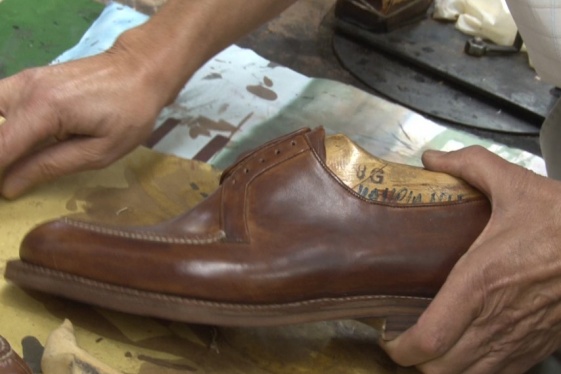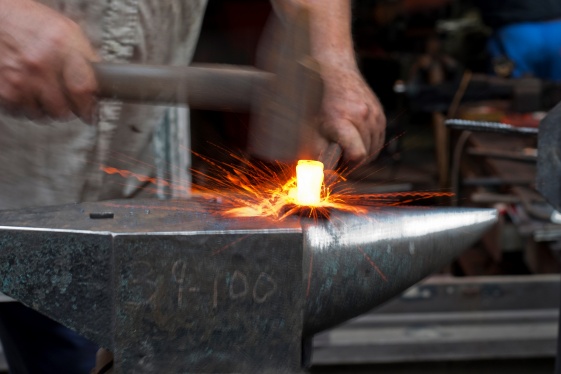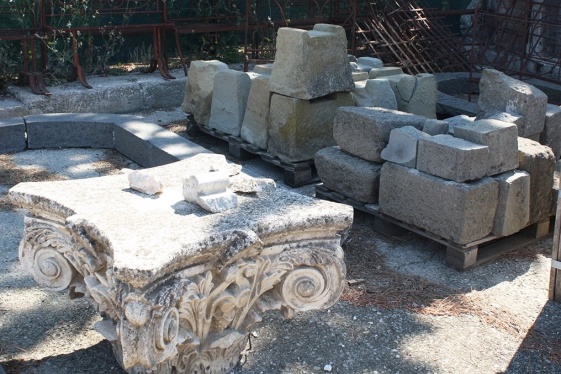
Unioncamere
Unioncamere - the Union of Italian Chambers of Commerce, Industry, Handicraft and Agriculture - is the public association that institutionally collects and represents the Italian chamber system. www.unioncamere.it
Italian handcrafts: Shoemaking in Macerata
In the summer of 1325, the process for the canonisation of St. Nicholas of Tolentino took place in some towns in the Marche. 371 witnesses from various socila backgrounds were invited to testify in the presence of the papal legates, who were to receive news and testimonies on the life and miracles of the saint.Among the testimonies presented was on...
Italian handcrafts: The Wrought Iron of Campobasso
The iron age came after the stone and bronze ages and dates back to 1000 BC. The use of iron spread more slowly, however, because it was only understood much later that the molten mass obtained in the first stone furnaces needed to be heated again to produce the pliable metal that we know today. This is wrought iron, which represents the artistic e...
Italian handcrafts: Viterbo Stone
The richness of the Tuscia subsoil has caused this area to become an important centre for the processing of stones, especially peperino (a type of volcanic tuff), which is worked by hand by particularly talented stonemasons, who have turned stone into an art form by creating interior and exterior fixtures, restorations, coverings, flooring, garden...
Italian handcrafts: The carpets of Sardinia
In the Oristano area, as in many Sardinian towns, the craft of weaving has always been the prerogative of women, at first mostly for domestic purposes and later as a business activity. The first type of production was mainly to provide for girls’ dowries and was woven at home using a wooden loom, a tool found in almost every house. In the 1960s the...
Italian handcrafts: Montelupo Ceramics
The kilns of Montelupo began producing the first “archaic majolica”, decorated with copper and manganese, as far back as the end of the 13th century, subsequently developing this activity over the course of the following century. By the end of the fourteenth century, Montelupo was one of the driving forces in the renewal of majolica techniques and...
Italian handcrafts: The Zampognas of Scapoli
The origins of bagpipes are lost in the mists of time: in the prehistoric era there is evidence of wind instruments made of pipes with holes and reeds to modulate the sound. The presence of similar flutes spread through the various villages of the Mediterranean area from the 3rd millennium BC, while pairs of reeded pipes, known as “auloi” by the Gr...
Italian handcrafts: Grosseto Saddles
The first “horned saddles” or “buttera saddles” date back to the second half of the 16th century, during the period of Spanish influence, with the establishment of the State of the Garrisons in Tuscany, in 1557, at the behest of Federico II, King of Spain. The saddle had a very robust structure. It was constructed around a wooden frame made from fi...
Italian handcrafts: Cremonese Violin Making
Cremonese luthiery, the art of making bowed and plucked stringed instruments, began in the mid-16th century and soon attracted attention on the international scene, thanks to the work of Andrea Amati and his disciples. The quality of the instruments made by Cremonese luthiers gradually declined from the end of the 18th century, but the foundations...
Italian handcrafts: Cuneo Stone
The Monregalese (the area covered by the ancient province of Mondovi, including the mountainous region between the Tanaro and the Pesio) in the province of Cuneo, is one of Piedmont’s few marble reserves, and was certainly its most important one in the period when the use of coloured marble was at its peak (17th-18th centuries). The quarries of the...
Italian handcrafts: Homeware from Omegna
The phases involved in the creation of “pots and accessories for the home” can be divided into three parts, according to the raw materials invented or used in the production of these objects. The first homeware company in Cusio was Calderoni Fratelli, established in 1851 in Casale Corte Cerro by Carlo Calderoni, who had learned the art of making pe...
Italian handcrafts: The gold work of Vicenza
At the heart of the local jewellery industry’s success lies more than a hundred years of tradition. It is enough to know that the first written evidence of the importance of this sector in the province dates back to the early 14th century, with the signing of the statute of “the Vicenza Guild of Goldsmiths”, a corporation of more than 150 craftsmen...
Italian handcrafts: The accordions of Castelfidardo
The ancestor of the accordion was the “tcheng” or “sheng”, an ancient instrument from China and other Southeast Asian countries dating back 4,500 years in time.The “tcheng” was the first instrument to use free reeds, the principle on which the accordion is based. The patent for the accordion was filed in Vienna in 1829 by Cyrill Demian, but it was...














